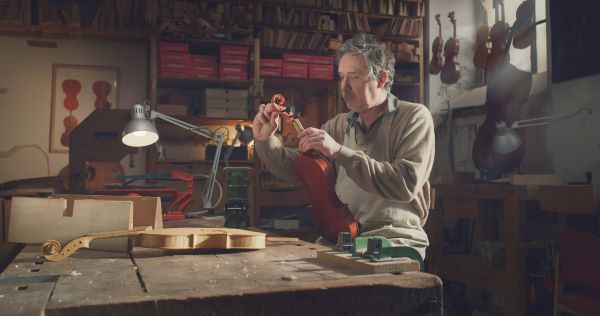
Work. Play. Renew.
5 Overlooked Wood Products
If you’re an Oregonian, one of the reasons you probably love this state is because we’re surrounded by trees. Trees and forests are good for the environment, the community and the people, and must be protected and managed. Responsible forest management reduces environmental disasters, such as wildfires and major erosion, promotes clean water and provides jobs in our communities. Forests also provide renewal building materials. And while you might easily recognize lumber and paper as wood products, trees are used for so much more.
Here are five often-overlooked wood products:
1. Musical Instruments
Music is a universal language: where two people may not speak the same language, they may know the same tune. And without wood products, how would we experience a piano’s chords, the religious music of pipe organs, the easy strumming of acoustic guitars or the inspiration of a cello?
Even a drummer’s drumsticks are made of wood, and there are many other percussion instruments that require wood such as xylophones, tambourines, wood blocks, and harmonicas. Both the violin and the bow are made of wood too, as are mandolins, banjos, and wind instruments such as oboes and clarinets. Wood products have been and always will be vital to the creation of music in our lives.
2. Household Helper
Have you ever opened an old closet or chest and been enveloped in that wonderful cedar fragrance? Cedarwood is often described as having a woody scent with an undertone of citrus, making it a comforting but energizing smell. The wood from cedar is often used in places where you’d store clothes or shoes since the smell of cedar is so good. But that’s not the only benefit cedar has.
The wood has antioxidant, antibiotic, and anti-inflammatory properties. The compound in the cedar is called thujaplicin, and the softwood tree family where it is synthesized probably evolved this compound as an insecticide, a pesticide, and an antifungal.
This is why cedar is often used in shoe-care products, such as shoe trees and boot shapers that keep your footwear in shape and clean. Cedar absorbs moisture and stops some problems before they even start. Without that moisture, bacteria don’t have a good place to breed, so it keeps your shoes and clothes intact and smelling lovely.
Cedar is also a great option for making raised garden beds and fence posts because it holds up well against soil. Due to its resistance to decomposition, it doesn’t need to be treated to be long-lasting.
3. Railroad Ties
It’s easy to forget that trains were once the lifeblood of our nation before major highways and trucks took over, but they are still important for travel and product transport. Wooden railroad ties are laid perpendicular to the train tracks and attached to the track ballasts, which hold the rails upright and kept them spaced to the correct gauge.
These days, you may also see old railroad ties used in landscaping. They are often found to be an attractive look due to their already-worn appearance, and sometimes they are upcycled into garden steps, vegetable or flower beds, and even furniture, such as garden benches and tables. Railroad ties can give a garden or landscape a rustic vibe.
4. Toys

Somewhere in each of our distant pasts, there was at least one wooden toy. Maybe you had a carved wooden car, train or boat you could float in the bathtub. Remember those wooden jigsaw puzzles for toddlers? How about a dollhouse or a carved dinosaur or puppy? Maybe you had Lincoln Logs, or the major staple to any playroom: blocks with letters carved into them.
Your dentist or doctor’s office probably had a wooden bead roller coaster in its waiting room. Or how about the wooden barnyard animals with their barn-shaped carrying case?
Are you getting nostalgic? No matter your generation, wooden toys have come in all shapes, sizes, and woods and still do.
5. Textiles
Plants have long been associated with the production of textiles, from cotton used in the Indus River Valley of Pakistan 3,000 years ago to linen made from flax used in Ancient Egypt. More recently, wood products have also become the base of often-used textiles. For instance, rayon can be made with cellulose fiber sourced from pine, spruce and even eucalyptus trees.
More and more, environmentally conscious clothing and shoe companies are looking toward conservation. Maybe you’ve heard of biodegradable shoes made from liquid cellulose? Fruit of the Loom recently partnered with an Australian wood-based textile company to develop a line of wood-based underwear made from pulp. These sustainably made products produce less carbon dioxide emissions and require less water.
Wood products play an important role in many parts of our everyday lives, including being vital to the survival of our ecosystem. Trees provide homes for animals, stabilize erosion, and keep our drinking water clean, but they also provide necessary materials for us to live, grow, and think. As trusted stewards, our forests need us to survive as much as we need them.
Explore the Oregon Forests Forever website and learn more about how managed forests benefit everyone in Oregon. From wood products to wildfire prevention to recreation, Oregonians need their trees.
[/et_pb_text][et_pb_code _builder_version=”4.19.2″ _module_preset=”default” hover_enabled=”0″ sticky_enabled=”0″][/et_pb_code][/et_pb_column][/et_pb_row][/et_pb_section]